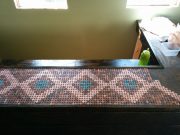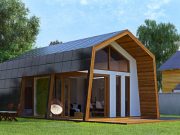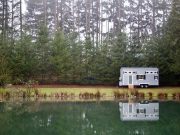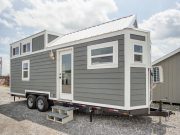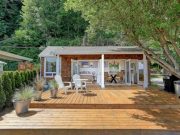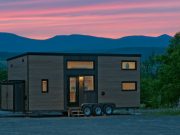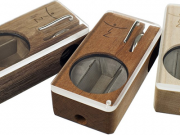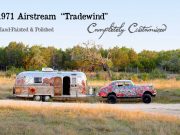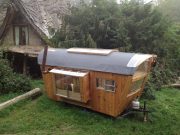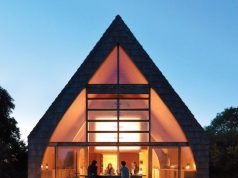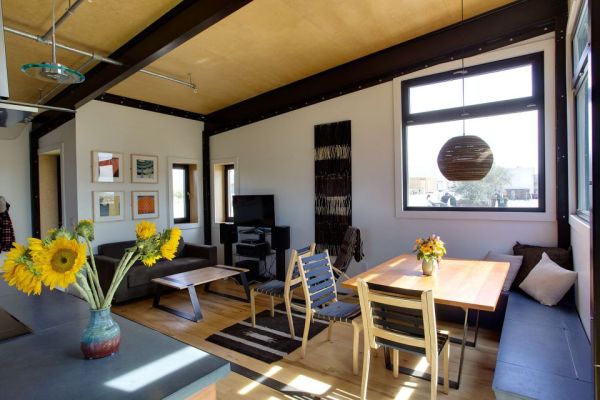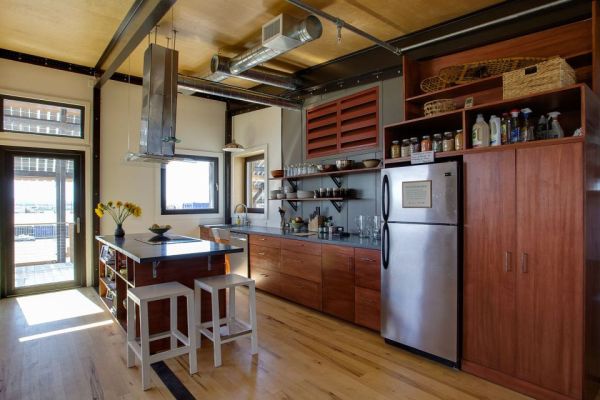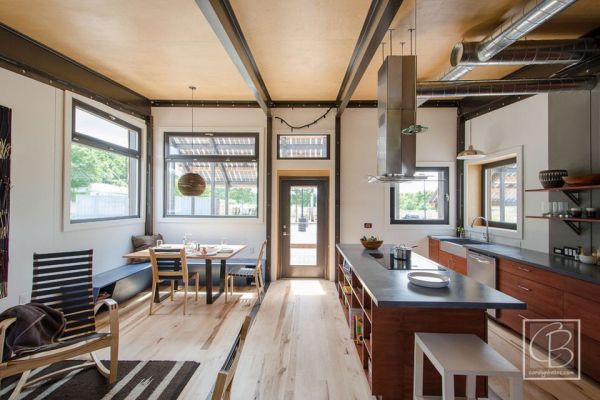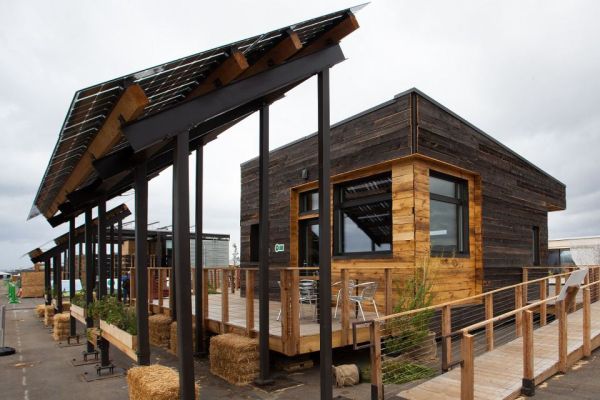Sleek Forest Home Where The Forest Is Actually In The Home
Building a home often means flattening the plot of land set to be developed, effectively destroying what made the site interesting in the first place. However, when trying to design something truly beautiful we find that architecture can only be as good as the land it embraces.
Meet the Casa Corallo by Guatemalan based architecture firm Paz Arquitectura. Rather than uprooting the trees that natively inhabited the building site, they literally designed the home around the natural vegetation. Towering trees flank, loom, and even pierce through the home in a way that blends existing and new in elegant symbiosis.
 Two trees frame the entry of the mostly concrete home. The harsh material was used to provide ironic contrast between natural and man-made.
Two trees frame the entry of the mostly concrete home. The harsh material was used to provide ironic contrast between natural and man-made.
 The home spill down the natural slope of the hillside as a stone path melts together with low brush.
The home spill down the natural slope of the hillside as a stone path melts together with low brush. The interiors are highlighted by tree trunks that climb up through the floors. In many cases, the location of the trees dictated the spatial organization.
The interiors are highlighted by tree trunks that climb up through the floors. In many cases, the location of the trees dictated the spatial organization.





While the home is large and imposing, the choice to involve the trees so prominently in the design speaks to the sensitivity the architect had towards the land.
This Hemp Winery Is About As “Green” As It Gets
Château Maris considers itself to be the ‘greenest’ winery in all of France. Not only is it sustainable and biodynamic, but its cellar walls are made almost entirely of organic lime and compressed hemp blocks that naturally insulate and breath, allowing the winery to stay at the optimal temperature year round without the use of active heating and cooling systems.
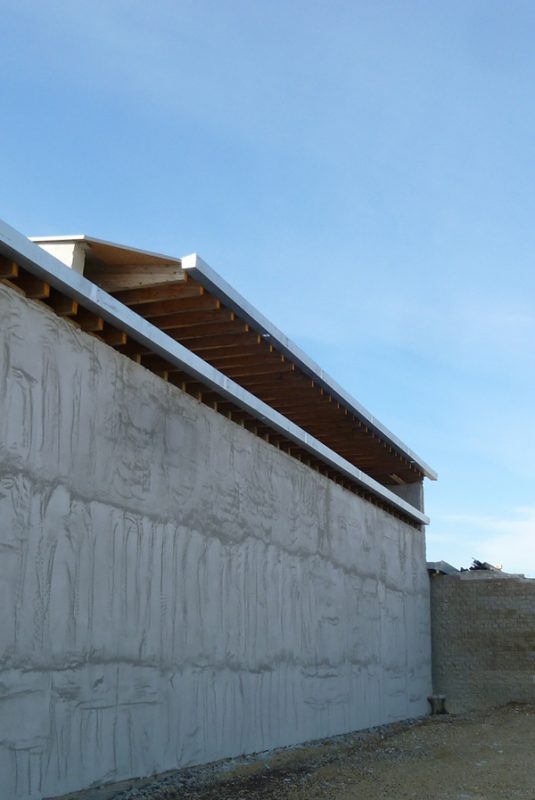
I’ll try and stay far away from any poor attempts at weed puns (as hard as that may be) so as not to detract from the truly remarkable application of everyone’s favorite herb. Of coure, hemp comes from the fibrous stems and branches of the marijuana plant and not the female “cannabis sativa” we know from recreational use. Hemp has many practical applications, none more impressing then using it to create this biodynamic wall system.

After considering other organic wall materials such as stone and straw bail, hemp was picked because it is inexpensive and lightweight, making shipping and building with much easier. The Château is currently in the process of a LEED Platinum certification, and boasts other sustainable features such as using recycled bottles and paper for labeling, and donating a percentage of sales to eco-friendly organizations. Find more about Château Maris here.
She Left A High Fashion Job In NYC To Build Incredible Bamboo Homes In Bali
There comes a time in most of our lives when you need to switch gears, or maybe even swap your entire car; change your job, your relationship, or your outlook. That’s what Elora Hardy did when she left her established career in the NY fashion scene to build bamboo houses in Indonesia.
Elora is a resident of Bali and spent the past five years working with bamboo construction, a sustainable resource that she believes could be used more readily. And when you see what she built, you might agree. Inspired by her father, who used bamboo in the campus buildings he helped create, she has long known the benefits of this highly available resource.
Bamboo doesn’t just look good. It grows incredibly fast, and has a strength-to-weight ratio that rivals steel. Like many woods, it does have one weakness, which comes in the form of damage from insects and moisture. Otherwise, when treated, it can serve as an integral component of building that last’s a lifetime. To learn more about these magnificent homes and Elora’s vision, check out her TED talk video, below.
Miracle “Algae Canopy” Makes The Oxygen Equivalent Of 10 Forest Acres In One Day
That thick green film that collects on rocks at the floor of a body of water may just be the solution to the excess CO2 in our atmosphere. In the past two decades researchers have been searching for ways to apply the positive atmospheric attributes of algae to design technology. EcoLogic Studio has done just that with the Urban Algae Canopy.
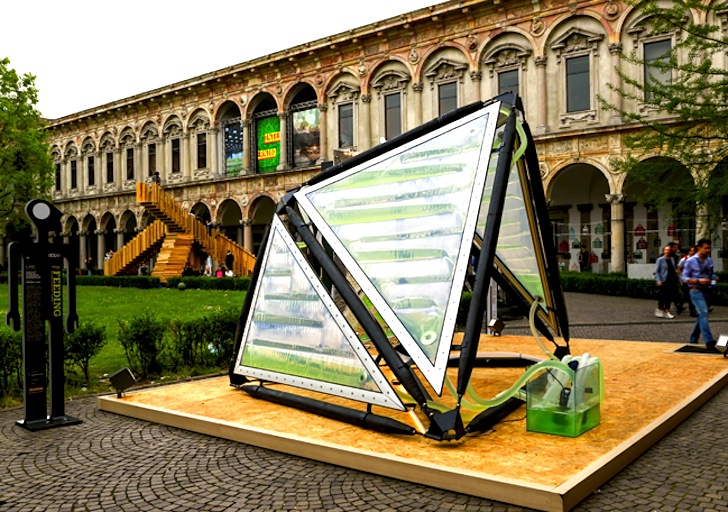
The structure is currently in the prototype stage of development and will be the first of its kind on display at the Expo Milano 2015. The canopies are completely reactive, and can produce and move energy and oxygen based on a number of inputs, including weather patterns and user movement. EcoLogic Studio claims that the canopies have the capability of producing the oxygen equivalent of four hectares of woodland area.

The ambitious project presents an innovative intersection between technology and biology, and fits in with the ever-growing movement of integrating natural processes into man-made structures.
It’s Alive! This Home Uses Compost For Climate Control
A collection of crafty and clever students at Japan’s Waseda University have developed a way to utilize the natural fermentation process of straw to heat and cool your home. On the interior, pre-fabricated acrylic boxes are stuffed full of common straw. The straw is left to ferment and compost, naturally giving off a staggering amount of heat – up to 86 degrees Fahrenheit!
The design of the home is fairly simple – meant to be more of a shell for experimentation than a display of architectural ingenuity. It serves its purpose well enough to showcase this nontraditional building technology, and the exterior is also clad in straw, showcasing its use as an effective weather barrier.

The fermentation is a result of a low-odor composting technique called “bokashi” (meaning “fermented organic matter”). The process happens over a four week period, so the real downside to this type of system would be the maintenance. If anything, the project is an example of what is possible using natural processes in building tech. The acrylic boxes are placed strategically throughout the interior so as to provide each space with the appropriate amount of heat.
The acrylic boxes are placed strategically throughout the interior so as to provide each space with the appropriate amount of heat. In the summer, the dormant straw that has already been composed acts as a natural insulator – keeping the home passively cool. They will even release moisture, which acts as a natural cooling mechanism.
In the summer, the dormant straw that has already been composed acts as a natural insulator – keeping the home passively cool. They will even release moisture, which acts as a natural cooling mechanism.  This floor plan shows where the boxes are hung on the interior walls.
This floor plan shows where the boxes are hung on the interior walls.
Designed by Masaki Ogasawara, Keisuke Tsukada and Erika Mikami, the students hope the prototype ushers in new and interesting investigations into natural building technologies. Their “Recipe to Live” house is certainly an example of the possibilities as we move towards a move eco-conscious society.
Images by Waseda University.
This Cabin Is Missing Something All Buildings Have, And It Rocks Because Of It
Who needs doors, right? That’s exactly what Nat Cheshire of Cheshire Architects said when he designed this pair of isolated structures off the coast of New Zealand. The cabins are completely open air and can be entered via a large square opening that steps you down into the main living area. The interiors are simple and clean, utilizing the warmth of native wood to tie the spaces to the adjacent landscape.
There is modesty and serenity in the way the buildings are anchored to the hillside. A quick glance would make them seem as if they were dark boulders jutting up and out of the grassy plains that carpet the surrounding countryside. They become a part of the iconic terrain rather than fight to visually overpower it. This harmony is echoed by the openness that results from having no doors. Protection might be limited, but the visceral experience is not.



